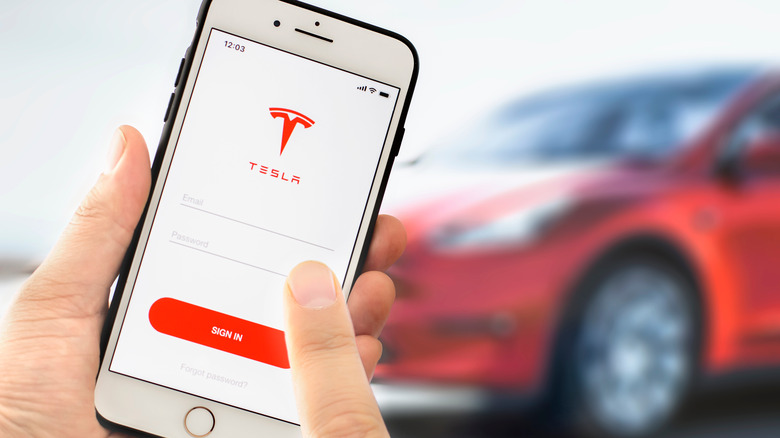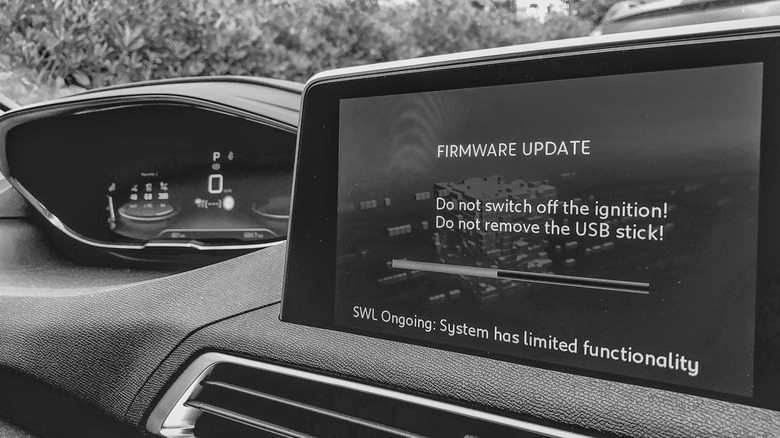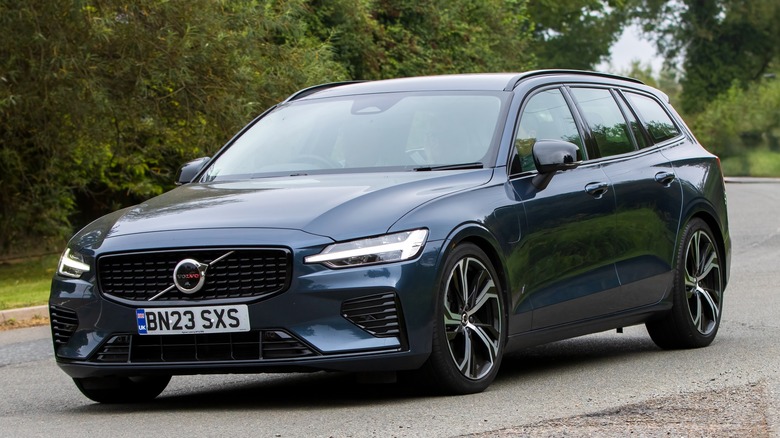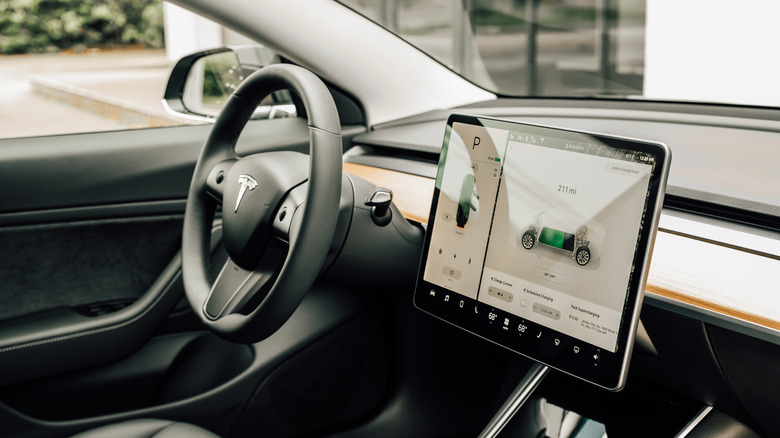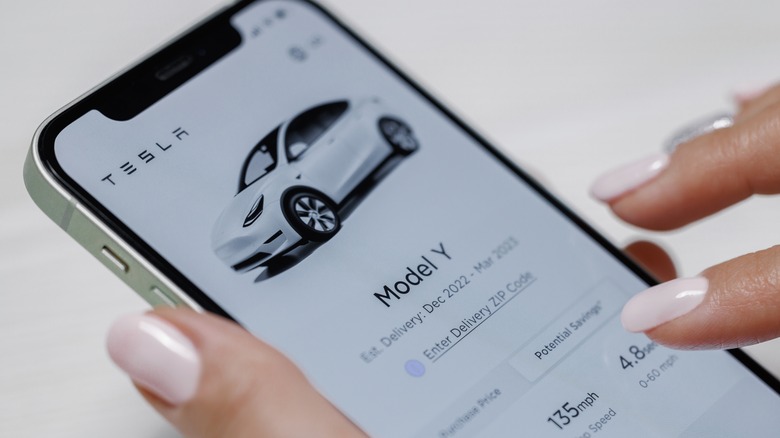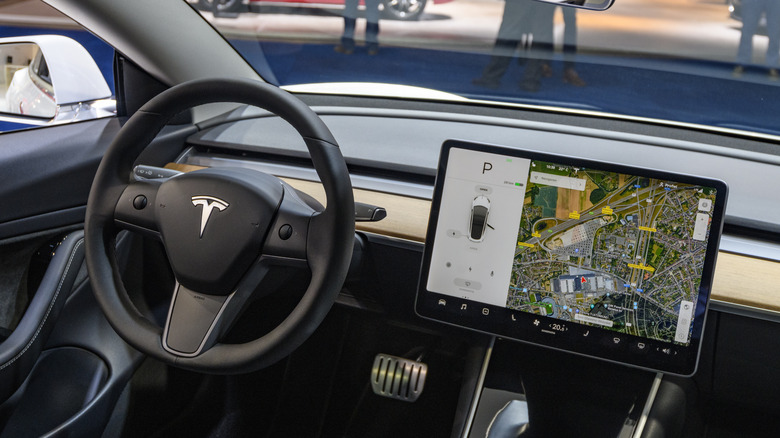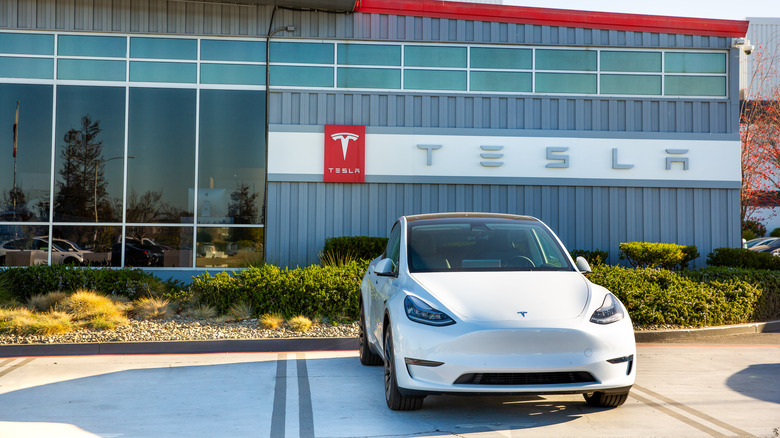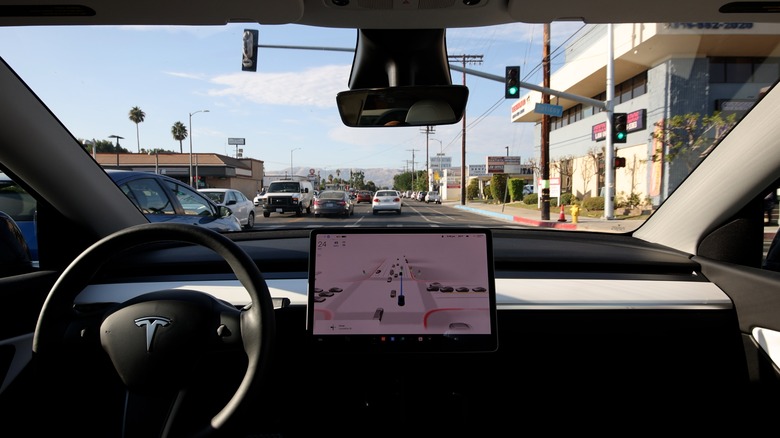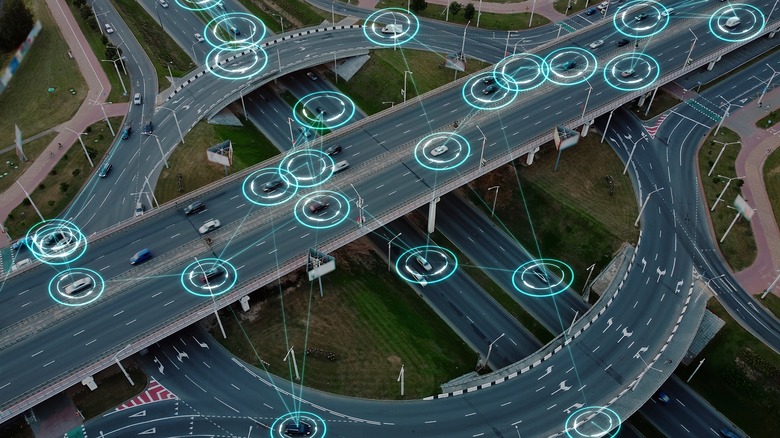Over-The-Air (Ota) Updates Explained: What They Do And How They Impact Your EV
Times have changed, and our vehicles have changed with those times. Long gone are the days when people could be found tweaking and maintaining their daily driver with a socket set on the weekend. Now several aspects of car maintenance, like other aspects of our lives, are managed digitally. This is particularly the case with electric vehicles. An EV doesn't need an oil change, and the coolants used will arguably outlast the vehicle. Furthermore, tinkering with things like the battery pack is probably a bad idea, from both a safety and a warranty perspective. So instead of getting coated in oil and grime, a modern driver may not be doing much to keep their car up to speed. And a lot of that is down to one amazing feature.
An "over the air (OTA) update" is pretty much what it sounds like. A car will use an internet connection, either through a SIM card and a data plan, or a WiFi connection, to download an "update" to the vehicle's software. These updates aren't just limited to apps on the infotainment system, and can have broad impacts on a vehicle's features and functions. Here we'll take an in-depth look at what these updates can be used for, how they make a driver's life more convenient, and any potential issues that could spring up because of them.
They're a sign of changing times
Just a few decades ago, cars were largely mechanical. Electronic components were limited to a radio, and some vital parts like the starter motor, headlights, and spark plugs. However, electrical components gradually started creeping in, making the vehicles more comfortable, efficient, and complex. The inclusion of things like fuel injection systems resulted in the need for engine control modules. Tuning things like the air/fuel mixture then evolved from taking a screwdriver to the carburetor to cracking out a laptop. Heated seats, electric windows, and various sensors designed to make troubleshooting easier furthered the digitization of motor vehicles.
Over the air updates are just a continuation of this process. The software keeping your vehicle and its various features working is just as vital as its physical components these days. Convenience is also a major consideration when it comes to vehicle design, and OTA updates make it possible to add features and fix problems with thousands of vehicles instantly, without requiring much from said vehicle's owners. EVs have a habit of including plenty of tech, and also tend to be more electrical than mechanical. They still contain mechanical parts, but those motors and batteries require software to run at their best.
Even relatively recently, a vehicle's software would either need to be updated via a laptop or USB stick. OTA updates are the next step, adding convenience and removing the need for extra equipment and a relatively complex process.
Your car will need an internet connection
As mentioned, the "over the air" part implies your car has some kind of wireless connection to the internet that it can use to download important updates. Conveniently, vehicles have been able to connect to the web for a long time. There are two ways of doing this, and one is likely more expensive than the other.
Some vehicles have a way to insert a SIM card or set up an eSIM, which in turn allows you to purchase a data plan your vehicle can use. While you should probably opt for an "unlimited" data plan if you plan on downloading updates as some may eat into your allowance. Some manufacturers, like Toyota, give you the option to connect your cellphone and use its data plan to download updates. This may be a cheaper and more convenient option for many drivers.
Then you have WiFi, which may be the most popular way to download updates for Teslas and other EVs. If your car can get a WiFi signal from your garage or driveway, your home WiFi system can be used to install updates. If the signal doesn't stretch, it may be worth considering a router upgrade. There is also public WiFi, which is available in places like parking garages. This can be used to download an OTA updates in many cases.
They aren't just for EVS
While OTA updates are closely associated with EVs, and arguably provide more utility to electric vehicles as a whole, they are actually available across a wide array of vehicles. As vehicles of all kinds use software for various purposes, from infotainment to battery management to engine tuning, OTA updates have applications across all vehicle types.
The main deciding factor on whether your vehicle supports OTA updates or not is likely its age, and then how technologically-forward it is. The concept, for those who are aware of it, has a close association with Tesla. This is likely down to Tesla's habit of cramming tech into its vehicles, and using that as a selling point — coupled with the fact Tesla was the first company offering the service.
By this point, the concept has been around for a while, but as with many things, the "rollout" of the tech is very gradual. Volvo is one of several companies that say OTA updates will be standard across their entire vehicle ranges going forward. In Volvo's case, EVs led the way but the benefits are now spreading to the manufacturer's range of hybrid vehicles.
You may not even notice one happening
While some people are obsessed with their vehicles, many resent the fact they have to check their tires occasionally, or take the thing in for an oil change every few thousand miles. While EV owners don't have to worry about oil, regular software updates could be as much of a pain as they are on your phone or computer.
But that doesn't have to be the case. You can usually tinker with your vehicle's settings and ensure updates are downloaded and installed automatically. There's a good chance this will happen when your vehicle is parked in your garage, and not set to be used for several hours. As a result, you may never even notice your car updating, or the feature that enables those updates to happen. So instead of something that requires you to actively perform a task, no matter how small that task is, OTA updates allow a vital part of modern vehicle maintenance to simply handle itself.
A manual option is usually available
On the flipside, some drivers enjoy staying in control and don't want anything happening to their vehicle that they haven't previously signed off on. This is where manual controls come in. Many manufacturers allow customers to set it so any major download requires approval. Players can then decide if they would like to proceed with the update or not.
While this approach requires more involvement from the customer than other methods, it does have its upside. If a "bad" update is somehow released, automatic installation may see it end up installed on someone's vehicle without them realizing it. If an owner insists on manually vetting updates, he or she will likely know exactly what they are installing. Should news already break about an update being less than optimal, that owner can ensure that said update is never installed in the car. If the update does get installed, a driver using manual updates may remember the last update they installed and then be able to spring into action quicker if their vehicle has been affected. So while some convenience will be sacrificed, manual updates are probably a good idea for most drivers.
Many times the fixes are minor
"Recall" is a very scary word. It conjures up images of cars randomly combusting, wheels flying off, and airbags failing to deploy when they are actually needed. However, in reality, most recalls are pretty benign. They relate to minor issues with the vehicle, which can usually be quickly fixed. One recent recall was resolved when Subaru simply mailed out new owner's manuals to affected customers.
The discrepancy between the actual seriousness of most recalls and the general public's reaction to the word has caused some people — including Elon Musk — to suggest a different word should be used to describe minor, easy-to-fix, problems with a vehicle.
Given the minor nature of many issues and the rarity in which those problems tend to manifest, customers may not even know something is wrong with their car until they read the mandatory notice companies have to send out when a recall is issued. Due to the speedy nature of OTA updates, there's also a good chance that the problem could be solved before USPS gets around to delivering said recall notice.
It can also save you a trip to a dealership
Normally, a "recall" would require a trip to the dealership followed by a few car-free hours while the problem is sorted out. This doesn't directly cost the customer money, but can be wildly inconvenient. OTA updates can streamline this process in a lot of cases. If the issue causing the recall can be fixed with software, then the customer doesn't need to do anything. The fix is bundled into an update, rolled out to the customer base, and the problem is probably resolved in the customer's driveway.
This has been the case for many "physical" issues with cars, as well as things that are directly software related. For example, one of Tesla's recalls in recent years involved a vehicle's electric windows not sensing obstructions. Although no one was officially injured, theoretically this problem could cause someone's arm to get trapped and/or injured if the window was rolled up with said arm in the way. Despite sounding like a "hardware issue," the problem was solved with an over the air update. Nothing had to be physically replaced on any of the vehicles.
Not updating regularly could lead to a safety issue
While convenient, it is still an essential task that has been added to the long list of things that vehicle owners should always be aware of. Recent events have shown that keeping your car's software up to date may be just as vital as checking your tires, or getting your brakes replaced.
A good example of this is Tesla's full self driving (FSD) software launch. The software itself was installed and unlocked via a series of OTA updates (along with customers purchasing a full self-driving package). However, shortly after the beta's launch around Thanksgiving 2022, accident reports started pouring in. The reports of FSD-related accidents and traffic violations led to a large Tesla recall, with an estimated 360,000 or more vehicles affected. Customers were told to look out for an update and to avoid using FSD until said update was installed. So while updating your version of Windows can be put on the back burner ad infinitum — it may be a bad idea to avoid updating your car when the opportunity arises.
There are downsides
OTA updates are an incredibly convenient way to keep your car running smoothly and remain up to date with the latest features. But there is a very small catch. It adds a vulnerability, however small, that wasn't previously there.
You can do an awful lot to an older car, but you can't hack into it. With an OTA update enabled car, you can theoretically hack into the servers sending out updates, inject your own code, then do some pretty awful things to the vehicles installing your "update." This is a tremendously difficult thing to do, but large companies are hacked all of the time. At the mild end of the spectrum, this could simply be another way a thief could crack into and ultimately steal your car. Looking at things like ransomware, it may be possible for a bad actor to lock your vehicle down and refuse to "unlock" it until a ransom has been paid. On the extreme end, a hack could be used to kill someone — or that's what cybersecurity expert Professor Justin Cappos claims, anyway (via The Drive).
The ability to send software to vehicles, coupled with upcoming advancements like self-driving software, also opens drivers up to other examples of dystopian nonsense. This ranges from things like BMW's controversial heated seats policy, to a vehicle theoretically repossessing itself. Consumer unfriendly actions are possible regardless of whether or not OTA updates exist, but the feature makes said policies a lot simpler to implement.
They're only going to get more common
Love them or hate them, you can't halt progress. Over-the-air updates are only going to become more common as new vehicles with the feature hit the market, and older vehicles with the feature trickle into the second hand market. The feature is still arguably rare, and only available in what many would consider new and cutting edge vehicles. But it's going to get more common across the board for a number of reasons.
The first is convenience. It makes life a lot easier for the customers, and can save manufacturers both time and money. Instead of using dealership staff to handle things like recalls, manufacturers can instead push many fixes out over the air — which saves them an absolute fortune. The customer also saves an afternoon, and everybody wins. While there are minor risks, these are negligible and far outweighed by the system's obvious benefits.
Then there is the increasing popularity of electric vehicles. Many EVs feature OTA updates as standard. With the green vehicles featuring more electrical components as standard, OTA updates are arguably the best way to keep one optimized. Manufacturers also enjoy cramming as much cutting-edge tech into their EVs as possible. So if you have yet to experience an OTA update, you're more than likely to do so at some point in the near future. That is, unless you have automatic updates on and don't even notice.
